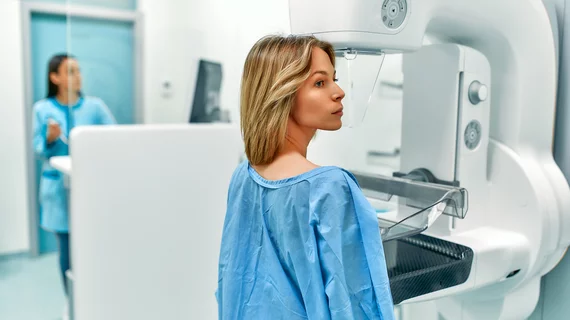Out-of-pocket expenses stemming from baseline mammography significantly lower patients’ odds of undergoing subsequent screenings, according to new research published Friday in the Journal of the American College of Radiology.
The Affordable Care Act of 2010 largely eliminated such consumer cost-sharing in breast cancer detection. However, grandfathered health insurance plans in place before the ACA, diagnostic mammograms, and other follow-up testing may still result in extra charges.
Wanting to better understand how this impacts adherence, Penn State researchers analyzed commercial claims data from more than 73,000 women screened between 2011-2014. They discovered a clear correlation, with every $100 uptick in expenses decreasing the likelihood of attending subsequent screenings in the next 1-2 years by 1.9 percentage points.
“Although the ACA eliminated patient cost sharing for preventive care, we found that privately insured women are still subject to copayments for screening mammogram or follow-up testing,” Linh Tran, with Penn State University’s Department of Health Policy and Administration, and colleagues wrote Nov. 5. “Such OOP expenditures were associated with significantly lower rates of subsequent screening, which potentially leads to delayed diagnosis of disease.”
For the study, Penn State researchers utilized the IBM Watson MarketScan Commercial Claims and Encounters Database, which covers inpatient, outpatient, office-based and other healthcare encounters. They included women ages 40-41 and tracked subsequent screenings over the next three years after the baseline scan. A total of 73,389 women met the criteria. About 5% spent something on their first mammogram at an average of $76.62. Roughly 21% had follow-up testing within three months of that initial exam, and among those about 64% (or 10,000 women) faced out-of-pocket payments at an average of more than $195. Such OOP spending for follow-ups led to a 2.7 percentage-point lower probability of screening 1-2 years later, while high costs produced “significantly” lower screening 2-3 years afterward.
“If the policy goal is to incentivize screening, an important consideration is reducing or eliminating the diagnostic and follow-up testing costs, which may also have important lessons for other covered preventive screenings,” Tran et al. advised.
A separate study published Aug. 17 in JAMA Network Open also explored this topic, reporting that out-of-pocket costs for additional breast imaging evaluations and procedures are “common, nontrivial and increasing.”

